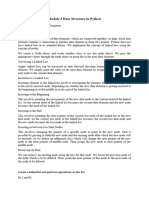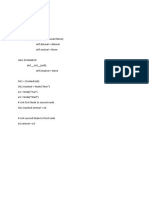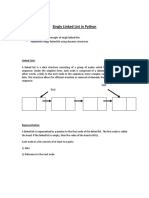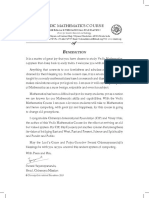0% found this document useful (0 votes)
26 views16 pagesDSA Lab 6
The document is a lab report detailing the development of a Python program for implementing a singly linked list. It covers objectives, required equipment, procedures, and includes code examples for creating nodes, adding and removing elements, and displaying the list. The report concludes with lab tasks that involve creating linked lists with various functionalities.
Uploaded by
amjidprogrammerCopyright
© © All Rights Reserved
We take content rights seriously. If you suspect this is your content, claim it here.
Available Formats
Download as PDF, TXT or read online on Scribd
0% found this document useful (0 votes)
26 views16 pagesDSA Lab 6
The document is a lab report detailing the development of a Python program for implementing a singly linked list. It covers objectives, required equipment, procedures, and includes code examples for creating nodes, adding and removing elements, and displaying the list. The report concludes with lab tasks that involve creating linked lists with various functionalities.
Uploaded by
amjidprogrammerCopyright
© © All Rights Reserved
We take content rights seriously. If you suspect this is your content, claim it here.
Available Formats
Download as PDF, TXT or read online on Scribd
/ 16


























































































